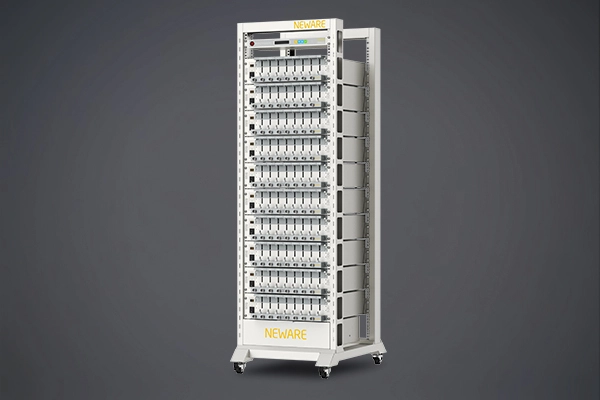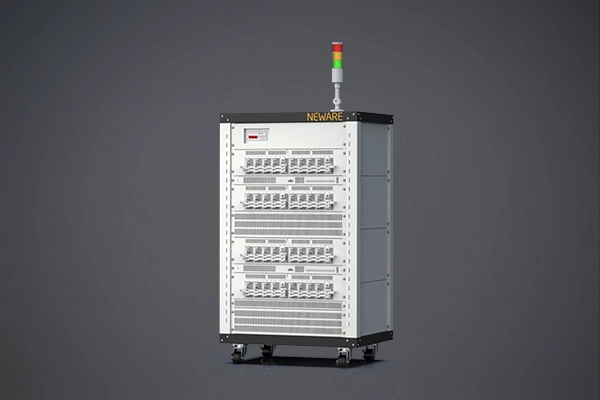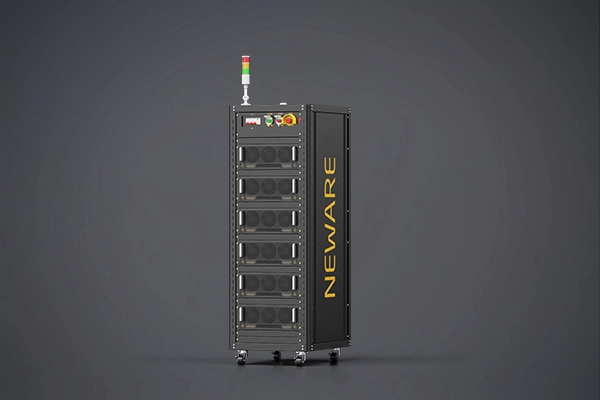As the linchpin of modern energy systems, batteries are subject to a battery of tests that ensure their reliability, safety, and performance. These evaluations are the rite of passage that every battery must clear, from the lab to the real world. In this concise exploration, we'll uncover the essential battery tests that guarantee these power units are ready for the challenges of renewable energy integration and beyond.

Environmental testing in battery assessment is a critical procedure that involves subjecting batteries to various environmental conditions to evaluate their performance and durability. This type of testing includes exposure to extreme temperatures, humidity levels, and sometimes mechanical stress or vibration to simulate real-world usage scenarios. The purpose is to ensure that the batteries can operate reliably and safely under a range of conditions they might encounter during their service life. Environmental testing helps in identifying potential weaknesses in battery design, materials, and construction, allowing manufacturers to make necessary improvements. It is an essential part of quality control and compliance with industry standards for battery performance and safety.
Low pressure testing in battery assessment is a specialized environmental test that examines how batteries perform under conditions of reduced atmospheric pressure. This test is crucial for applications where batteries may be used at high altitudes or in environments with significantly lower air pressure than standard atmospheric conditions. By simulating these low pressure environments, manufacturers can evaluate potential changes in battery performance, such as alterations in discharge rates, voltage stability, and overall energy output. The test helps to identify if there are any adverse effects on the battery's chemistry or mechanical components due to the lower pressure, ensuring that the battery can function effectively and safely in a variety of settings.
Temperature cycling, also known as thermal cycling, is a critical environmental test in battery assessment that involves subjecting the batteries to repeated cycles of temperature changes. This process simulates the effects of fluctuating temperatures that batteries might encounter during their operational life, such as those experienced in outdoor or varying climate conditions. The test includes alternating the batteries between high and low temperatures, typically within a range that the battery is expected to withstand, to evaluate how these temperature extremes affect the battery's performance, lifespan, and reliability. Temperature cycling helps identify potential issues like thermal expansion, contraction, material degradation, and changes in electrical characteristics, ensuring that the batteries can maintain their functionality and safety across a wide range of temperatures.
Thermal abuse testing in battery assessment is a rigorous procedure designed to evaluate the safety and stability of batteries under extreme heat conditions. This test simulates scenarios where batteries might be exposed to temperatures beyond their normal operating range, such as those that could occur due to malfunction, overcharging, or external heat sources. The purpose of thermal abuse testing is to determine how batteries react to excessive heat, including their ability to withstand high temperatures without causing damage, releasing hazardous substances, or igniting. By subjecting batteries to these conditions, manufacturers can ensure that their products meet safety standards and are less likely to pose a risk in real-world applications where they might be exposed to thermal stress.
Rated capacity in battery testing refers to the manufacturer's specified amount of electrical charge that a battery can deliver under defined conditions. It is expressed in units of ampere-hours (Ah) or milliampere-hours (mAh) and represents the capacity at which a battery is designed to operate. This rating is typically determined using a standardized test where the battery is discharged at a constant current until it reaches a specified cutoff voltage. The rated capacity is an important parameter for consumers and manufacturers as it indicates the expected performance and longevity of the battery in terms of how long it can provide power before needing to be recharged or replaced. It is crucial for ensuring that the battery meets the energy requirements for its intended applications and for comparing the performance of different battery models.
Discharge performance in battery testing is a critical measure that evaluates how effectively a battery releases its stored energy over time. This involves assessing the battery's ability to deliver a consistent and reliable flow of current under various load conditions. During discharge performance testing, batteries are subjected to controlled discharge cycles, often at different rates, to determine their capacity, voltage profile, and overall power output. The test results provide insights into the battery's efficiency, stability, and endurance, which are essential for predicting its real-world performance and lifespan. Understanding discharge performance is crucial for applications where consistent power supply is critical, such as in electric vehicles, portable electronics, and backup power systems.
Over discharge in battery testing refers to a condition where a battery is drained beyond its recommended discharge level, leading to a state where the voltage drops significantly below the battery's nominal voltage. This deep discharge can cause permanent damage to the battery's chemistry and structure, reducing its overall capacity and lifespan. Testing for over discharge involves intentionally discharging the battery to levels lower than what would be typically safe to operate, in order to study its response and the effects on its performance. Such testing helps in understanding the limits of battery operation and ensuring that safety mechanisms, like voltage cut-offs, are in place to prevent deep discharge scenarios in practical applications. It is a crucial part of battery safety and reliability assessments, particularly for applications where over discharge could lead to hazardous conditions or equipment failure.
Over charge in battery testing refers to a scenario where a battery is charged beyond its optimal or safe voltage level, potentially leading to overpressure, increased temperature, and in some cases, irreversible damage to the battery's internal components. This process can cause a range of issues, from reduced battery life to safety hazards like leakages or thermal runaway. Over charge testing is conducted to assess the battery's reaction to excessive charging, ensuring that it can handle such conditions without compromising its performance or integrity. By simulating over charge conditions, manufacturers can develop and test safety features like charge protection circuits and overcharge guards, which are essential for consumer protection and adherence to industry standards. This type of testing is vital for verifying the reliability and safety of batteries, particularly in applications where over charging could lead to catastrophic failures.
Forced discharge in battery testing is a procedure where a battery is intentionally discharged rapidly at a high current rate to evaluate its ability to deliver power under stress conditions. This test is designed to simulate extreme usage scenarios where a battery might be required to provide a large burst of energy in a short period, such as during peak load demands or in emergency situations. Forced discharge helps to determine the battery's capacity to withstand high discharge rates without significant voltage drop or performance degradation. It also assesses the battery's thermal stability and the potential for internal damage due to rapid energy release. This type of testing is crucial for applications that demand high power output and for ensuring that batteries can meet the demands of such intense conditions without compromising safety or reliability.
High-rate charging in battery testing is a process that evaluates a battery's ability to accept a rapid influx of electrical energy at a higher-than-normal charging rate. This test is crucial for understanding how batteries perform under conditions that demand quick recharging, such as in electric vehicles or portable devices that require fast turnaround times for use. During high-rate charging, the battery is subjected to a higher current than it would typically receive, allowing researchers and engineers to assess the battery's thermal response, voltage regulation, and overall efficiency under stress. The goal is to ensure that the battery can safely and effectively handle the increased charging demands without overheating, degrading prematurely, or risking safety hazards, thereby validating its suitability for applications that require rapid charge capabilities.
External short circuit in battery testing is a safety measure that simulates a scenario where a battery's terminals are directly connected, bypassing the intended load. This test is designed to assess the battery's response to an unintended short circuit, which could potentially lead to dangerous situations such as overheating, thermal runaway, or even explosion. By deliberately creating an external short, researchers can evaluate the battery's safety mechanisms, like fuse activation and voltage protection systems, to ensure they adequately protect against such incidents. It is crucial for verifying the robustness of a battery's design and its ability to withstand and manage abnormal electrical conditions, thereby maintaining safety and reliability in real-world use.
Endurance in battery testing refers to the assessment of a battery's ability to maintain its performance over an extended period of use, including its capacity to withstand multiple charge and discharge cycles. This test is critical for determining the longevity and reliability of a battery, as it subjects the battery to repeated cycles of use to simulate its expected service life. Endurance testing helps identify the degradation rate of the battery's capacity, the stability of its voltage output, and the overall impact of continuous use on its physical and chemical properties. It ensures that the battery can provide consistent performance without significant loss of capacity or increase in internal resistance, which is essential for applications requiring long-term, dependable power sources.
Charge retention and recovery in battery testing are measures of a battery's ability to hold its charge when not in use (charge retention) and its ability to return to a normal state of charge after a period of storage or inactivity (charge recovery). Charge retention testing evaluates how well a battery maintains its stored energy over time without any load, which is crucial for applications where the battery may be idle for extended periods. Recovery testing, on the other hand, assesses the battery's performance after it has been subjected to a stress condition, such as over-discharge or overcharge, to determine if it can recover its original capacity and performance characteristics upon recharging. These tests are essential for understanding the battery's behavior in real-world scenarios where it may be stored or used intermittently, ensuring that it meets the required standards for energy conservation and reliability upon reactivation.
Internal resistance in battery testing is a key parameter that quantifies the opposition to the flow of electric current within the battery itself. It is an indication of the energy loss in the form of heat that occurs when the battery is in operation. Measuring internal resistance provides insights into the battery's overall health and efficiency, as a higher internal resistance can lead to reduced battery life and performance. It is typically assessed using an AC impedance method, which can detect minute changes in resistance that may not affect the battery's normal operation but could be indicative of issues such as aging, sulfation, or damage to the internal components. Internal resistance testing is crucial for monitoring the battery's state of charge, its rate capability, and for predicting its remaining useful life, making it an essential aspect of battery maintenance and quality assurance processes.
Environmental testing in battery assessment is designed to evaluate how batteries perform and withstand various environmental conditions that they may encounter during their service life. This comprehensive testing includes exposure to a range of temperatures, humidity levels, mechanical shocks, vibrations, and potentially corrosive atmospheres. The purpose of environmental testing is to ensure that batteries can operate reliably and safely under these conditions without degradation in performance or increased risk of failure. It helps to identify the battery's resilience to environmental stressors, which is critical for applications where batteries are used in harsh or unpredictable conditions, such as in aerospace, automotive, and outdoor electronics.
Vibration testing in battery assessment is a procedure that simulates the effects of mechanical oscillations on a battery's structure and performance. This test is crucial for evaluating the battery's durability and reliability in environments where it may be subjected to continuous or intermittent vibrations, such as in transportation, aerospace, and heavy machinery. By exposing the battery to controlled vibration frequencies and amplitudes, technicians can identify potential weaknesses in the battery's construction, such as component displacement, solder joint fatigue, or casing integrity issues. Vibration testing ensures that the battery can maintain its performance and safety standards even under dynamic conditions, thus preventing potential failures due to mechanical stress.
Mechanical shock testing in battery assessment is a critical procedure that evaluates the battery's ability to withstand sudden and rapid changes in motion, such as those that may occur due to impacts, drops, or other abrupt forces during transportation or operation. This test is designed to simulate real-world scenarios where the battery could be exposed to shock events, helping to ensure that the battery can maintain its structural integrity and continue to function safely and effectively. Mechanical shock testing is essential for applications where the battery is likely to experience physical stress, such as in portable electronics, automotive systems, and industrial equipment, ensuring that the battery's performance and safety are not compromised by sudden mechanical forces.
Free fall testing in battery assessment is a simulation of the impact forces a battery might experience if it were to be accidentally dropped or subjected to a free-falling motion. This type of testing is crucial for evaluating the battery's structural robustness and its ability to handle the physical stress of a sudden stop at the end of the fall. By conducting free fall tests, manufacturers can determine how the battery, its components, and casing perform under the strain of impact, which can help identify potential vulnerabilities to damage. The test results provide insights into whether the battery can maintain its performance and safety after being dropped, which is particularly important for portable devices and any application where the battery is at risk of falling from a height.
Crush testing in battery assessment is a severe mechanical test that evaluates the battery's structural integrity and safety when subjected to compressive forces that simulate extreme conditions such as being crushed or severely compressed. This test is particularly important for applications where batteries may be exposed to heavy loads or mechanical deformation, such as in heavy machinery, automotive crush zones, or during accidental impacts. During a crush test, the battery is gradually compressed to a predetermined level or until it reaches a specific deformation percentage. The test measures the battery's resistance to deformation, the point at which internal shorts may occur, and whether it can prevent internal damage or casing rupture that could lead to safety hazards. Crush testing is a critical component of battery safety evaluations, ensuring that batteries can withstand significant mechanical stress without compromising the safety and performance of the device in which they are used.
Impact testing in battery assessment is a procedure that measures a battery's resilience to sudden, sharp forces that mimic the effects of a collision or a heavy impact. This test is essential for evaluating the battery's structural robustness and its ability to maintain functionality and safety after being subjected to shock loads, such as those that might occur during transportation accidents or drops. During an impact test, a controlled amount of energy is applied to the battery in a specific direction and manner, simulating real-world impact scenarios. The battery's response, including any deformation, electrical performance changes, or potential for leakage or rupture, is monitored. Impact testing helps ensure that batteries can withstand the physical stress of impacts without significant damage, which is critical for applications where the battery's durability and safety are paramount, such as in automotive, aerospace, and portable electronic devices.
Electrostatic discharge (ESD) testing in battery assessment is a critical evaluation that determines the battery's susceptibility to damage from sudden electrostatic discharge events. This test simulates the rapid transfer of electrical charge between two objects, which can occur due to the buildup of static electricity in everyday situations. ESD testing is essential for ensuring that batteries are protected against the potential harm caused by such discharges, which can lead to performance degradation or even catastrophic failure. By subjecting the battery to controlled ESD events, the test assesses the effectiveness of the battery's ESD protection measures and helps to identify any vulnerabilities that might require further engineering solutions. This type of testing is particularly important for applications where batteries are used in environments where static electricity can accumulate, such as in manufacturing, handling, and storage processes.
EMC (Electromagnetic Compatibility) testing in battery assessment is a series of evaluations conducted to ensure that a battery can operate without generating electromagnetic interference (EMI) that could affect other electronic devices, while also being resistant to external EMI that could impact its own performance. This testing is crucial for verifying that batteries meet international standards for electromagnetic emissions and immunity, ensuring they do not contribute to electromagnetic pollution and can function reliably in complex electronic systems without being disrupted by external fields. EMC testing includes both emission tests, which measure the level of EMI generated by the battery during operation, and immunity tests, which assess the battery's ability to maintain performance under controlled EMI conditions. Compliance with EMC standards is vital for the battery's safe and effective integration into modern electronic devices and systems.
Electrochemical analysis in battery testing is an in-depth examination of a battery's chemical reactions and processes that occur during charging and discharging cycles. This analysis is conducted to understand the fundamental behavior of the battery's electrochemical system, including the kinetic and thermodynamic properties of the electrode materials and electrolyte. Techniques such as cyclic voltammetry, electrochemical impedance spectroscopy (EIS), and accelerated rate calorimetry (ARC) are often employed to study the battery's performance, diagnose potential issues, and predict its lifespan. Electrochemical analysis provides valuable insights into the battery's energy and power capabilities, its response to various operating conditions, and the mechanisms of degradation, which are critical for optimizing battery design, improving performance, and ensuring safety and reliability in diverse applications.
Battery materials analysis in the context of battery testing involves a comprehensive examination of the constituent materials of a battery, including the anode, cathode, electrolyte, and separator. This analysis is crucial for understanding the chemical, physical, and electrochemical properties of these materials and how they contribute to the overall performance and safety of the battery. Techniques such as X-ray diffraction (XRD), scanning electron microscopy (SEM), energy-dispersive X-ray spectroscopy (EDS), and inductively coupled plasma mass spectrometry (ICP-MS) are utilized to characterize the materials' structure, morphology, and elemental composition. Battery materials analysis helps in optimizing the materials for better performance, identifying potential failure modes, and developing new materials with improved characteristics for future battery technologies. This meticulous evaluation is essential for enhancing the energy density, cycle life, and safety profile of batteries used in various applications, from portable electronics to electric vehicles.
As researchers and engineers deeply involved in the field of electrochemical energy storage, we advocate for the necessity of extensive battery testing for several compelling reasons. Firstly, the diversity of applications for batteries, ranging from portable electronics to large-scale energy systems, demands a thorough understanding of their performance under various conditions. Each application presents unique challenges and requirements that necessitate specific testing protocols to ensure reliability and safety. Secondly, the intrinsic complexity of batteries as electrochemical systems means they are susceptible to a range of failure modes, including mechanical stress, thermal imbalances, and electrochemical degradation. Comprehensive testing is essential to identify these vulnerabilities and to develop strategies to mitigate them. Thirdly, the rapidly evolving nature of battery technology underscores the need for continuous assessment. Innovations in materials, designs, and manufacturing processes require rigorous validation to ensure they meet or exceed the performance benchmarks set by industry standards. Lastly, the imperative for safety cannot be overstated. Batteries, due to their energy density, carry inherent risks that can be mitigated only through meticulous testing. Ensuring public trust and compliance with regulatory requirements is contingent upon demonstrating the safety and reliability of batteries through standardized testing procedures. In summary, the array of tests conducted on batteries is not merely a formality but a critical component of advancing energy storage technology, ensuring its practicality, and safeguarding its integration into society.
Discover the pinnacle of precision and reliability with NEWARE's cutting-edge battery testing equipment. Engineered to meet the rigorous demands of today's energy storage technology, our devices offer an unparalleled suite of tests that ensure the highest standards of performance, safety, and longevity for your batteries. Whether you're pushing the limits of innovation in research or seeking dependable quality control in production, NEWARE's battery testers are the key to unlocking your energy storage solutions' full potential. Experience the future of battery diagnostics today—reach out to learn more about how our state-of-the-art testing equipment can empower your endeavors
NEWARE TECHNOLOGY LLC
755 Ames Avenue, Milpitas, CA, USA, 95035










